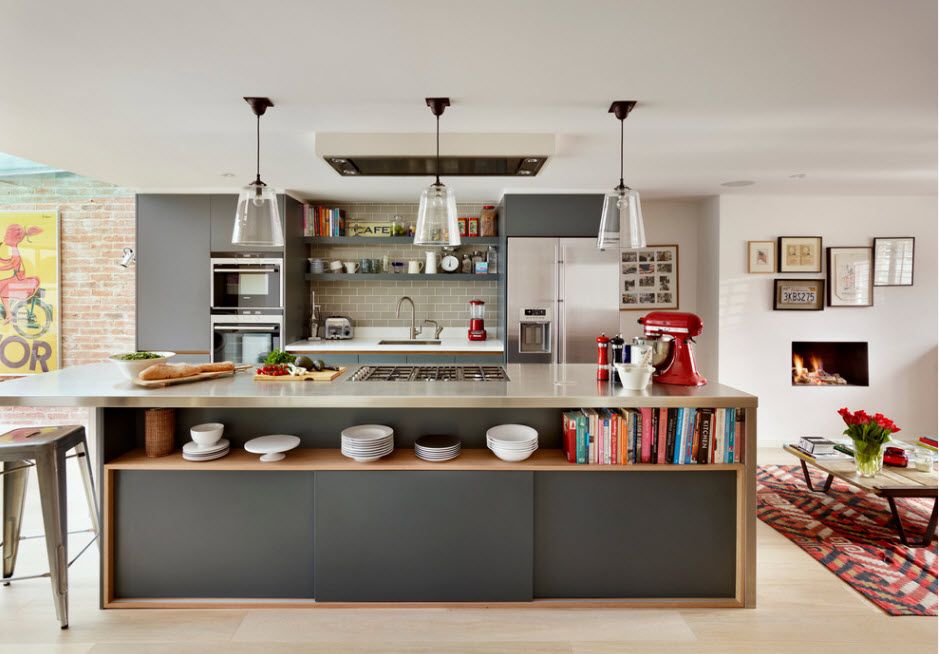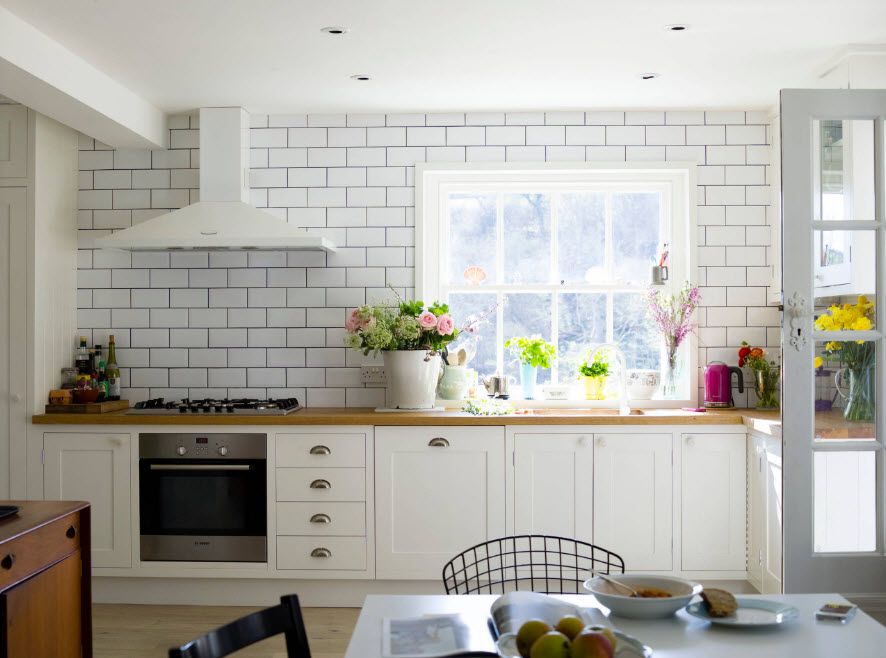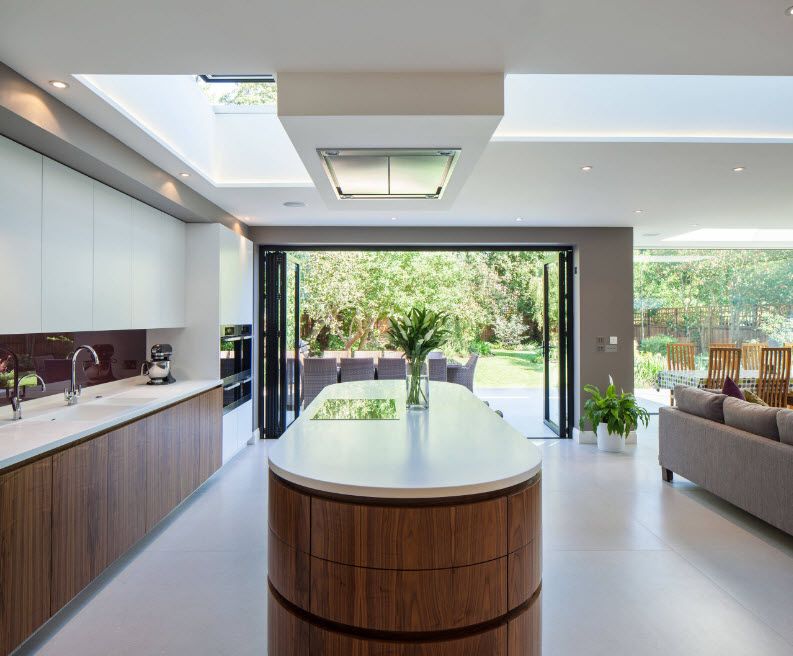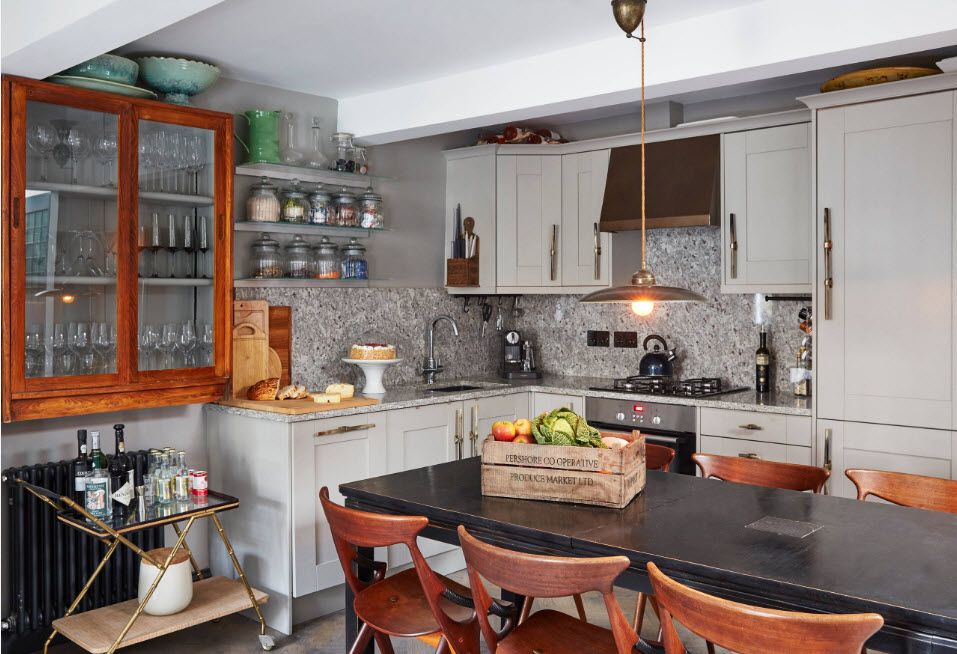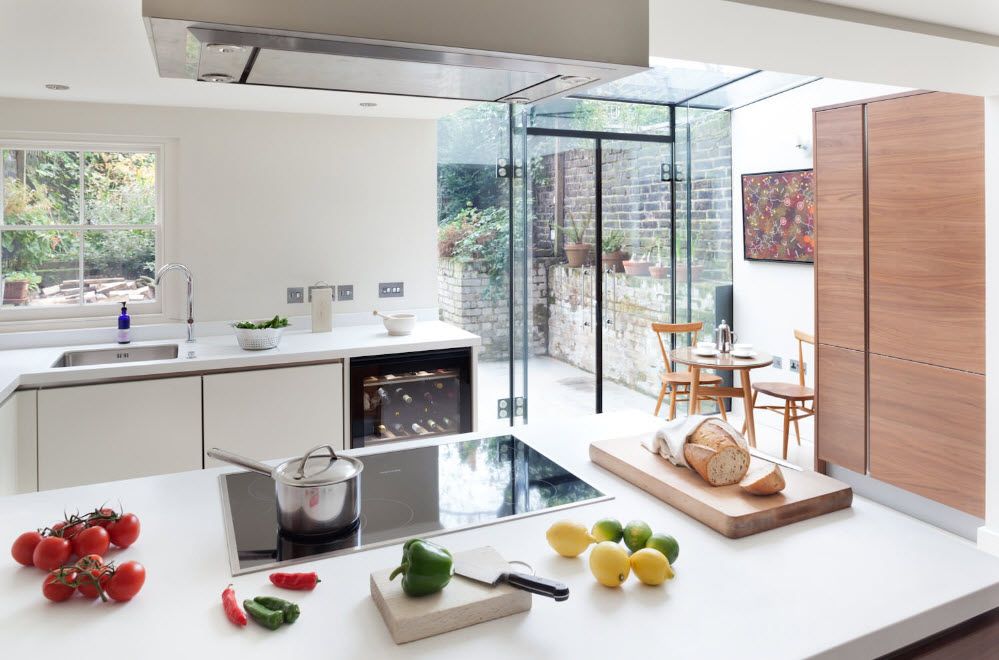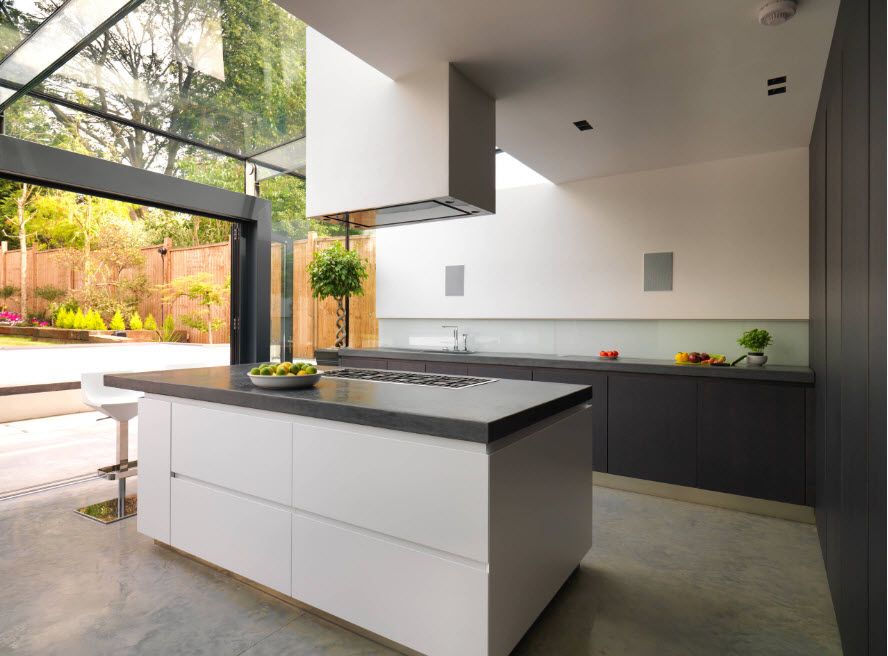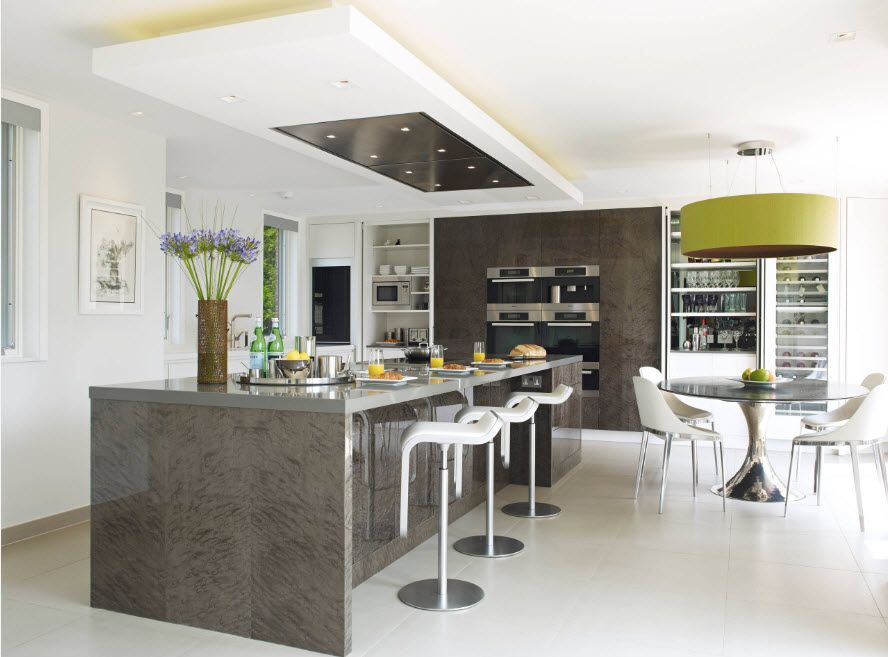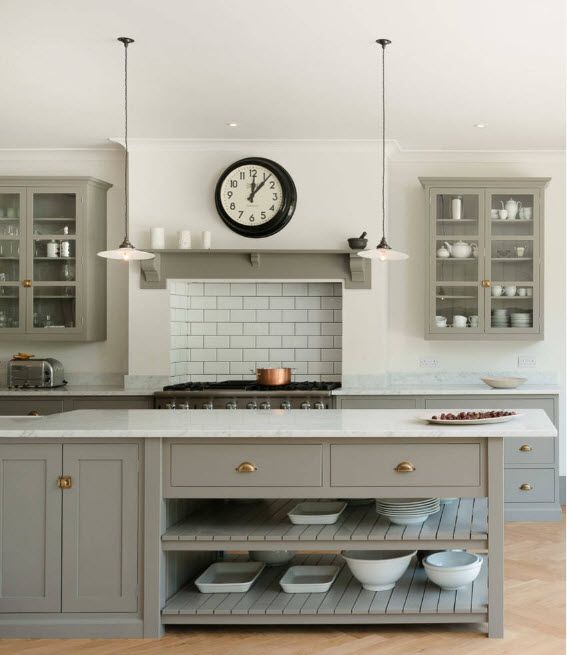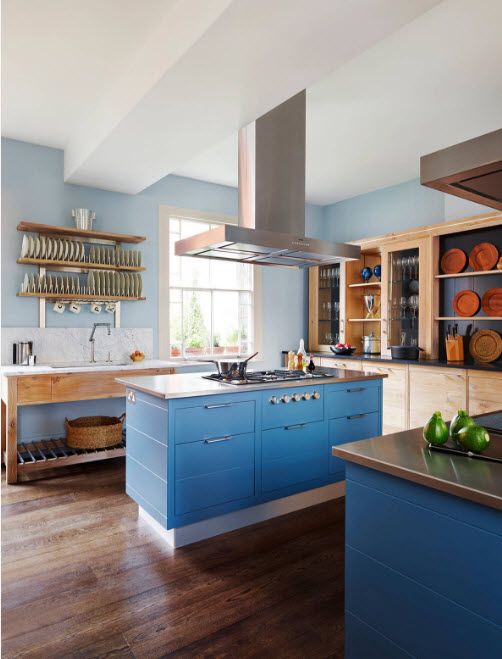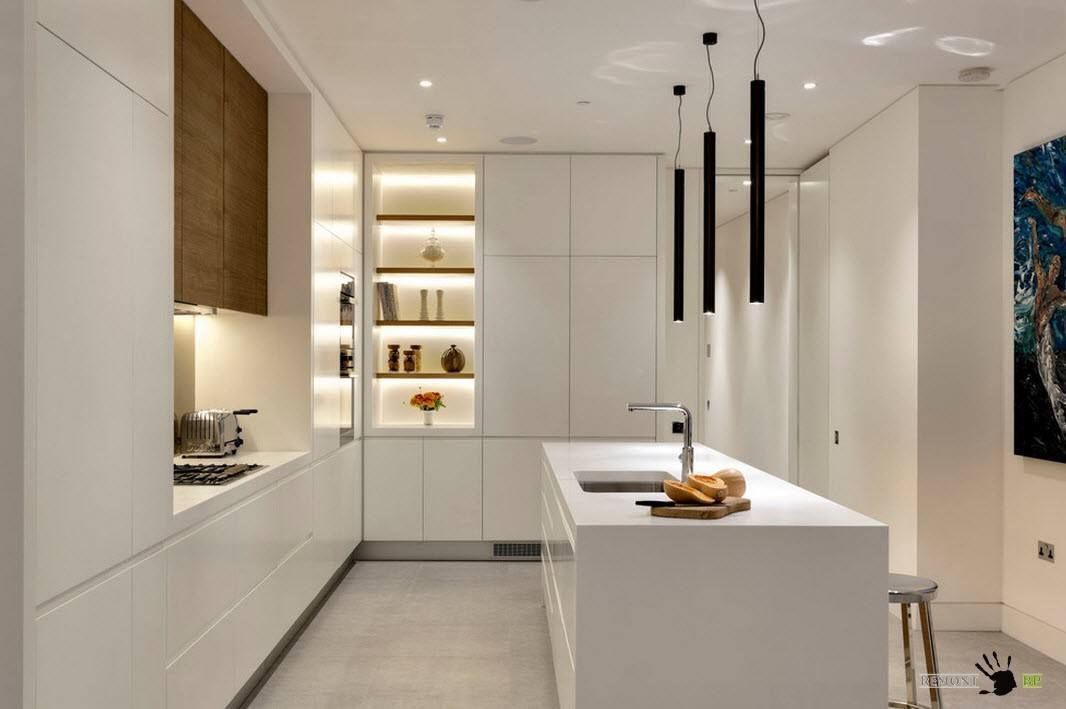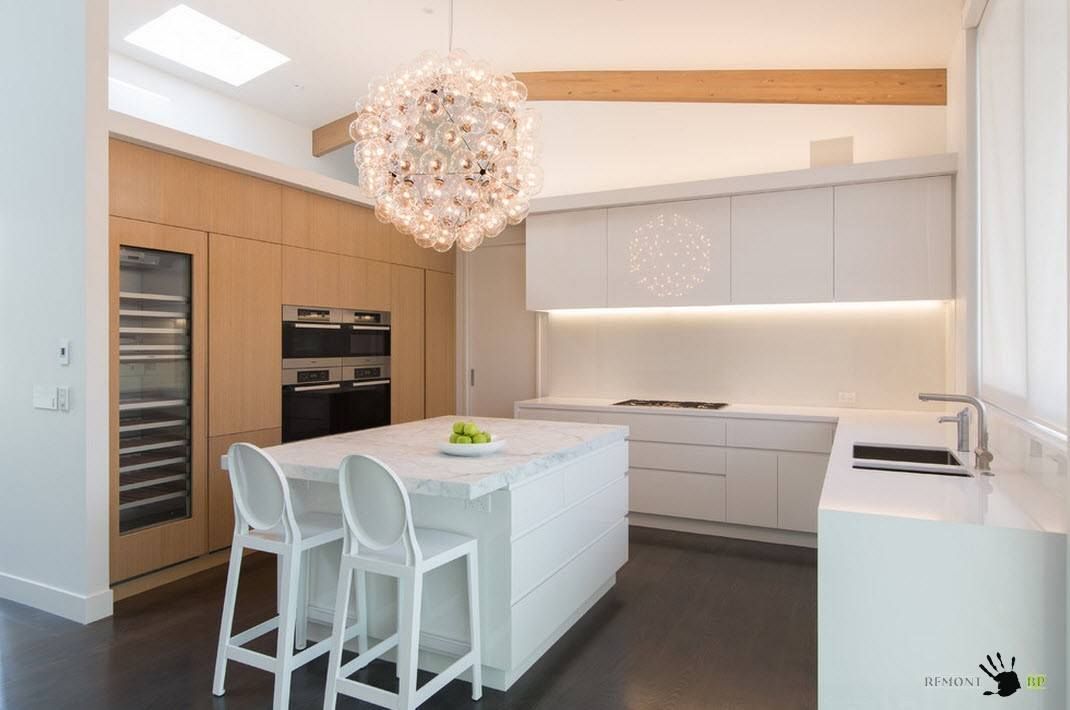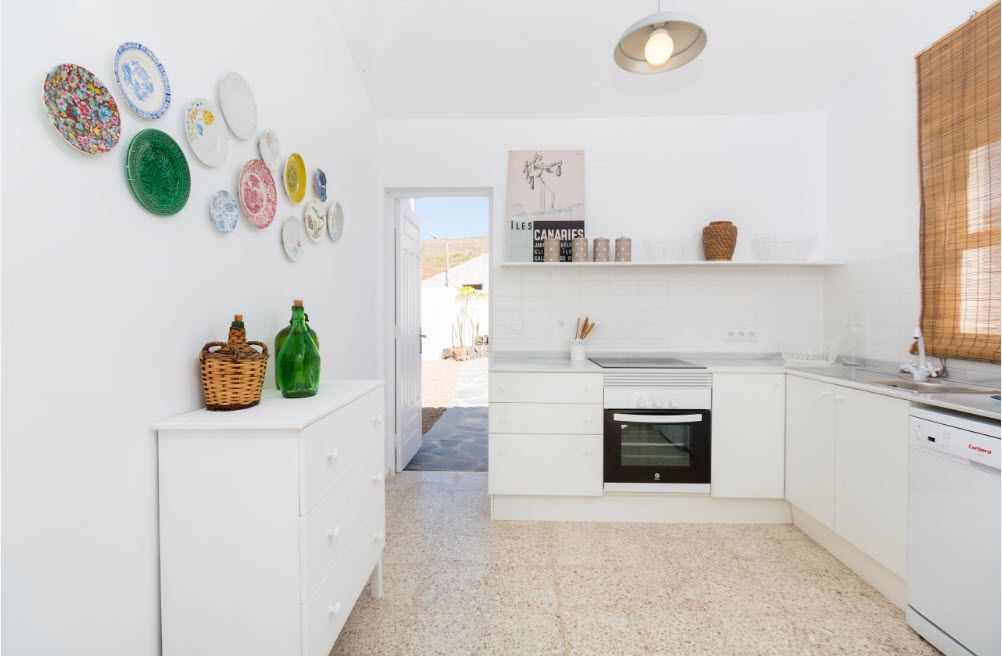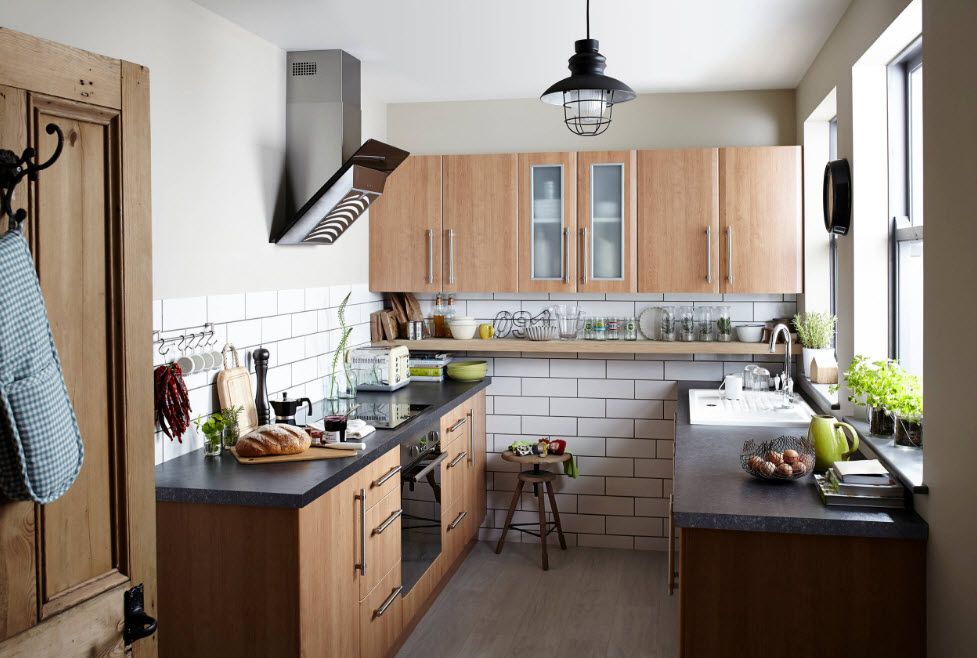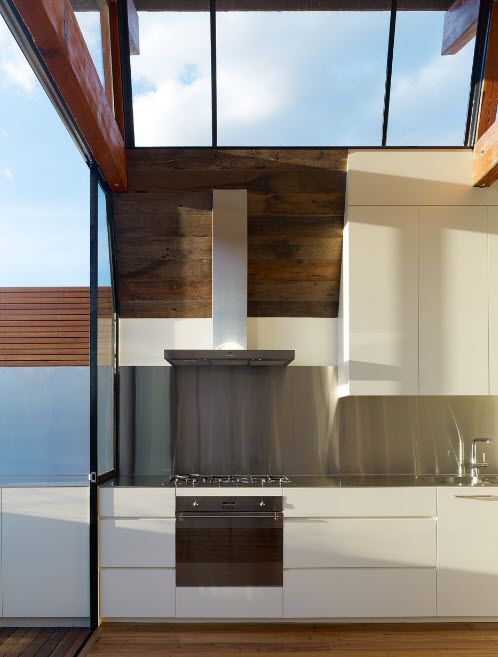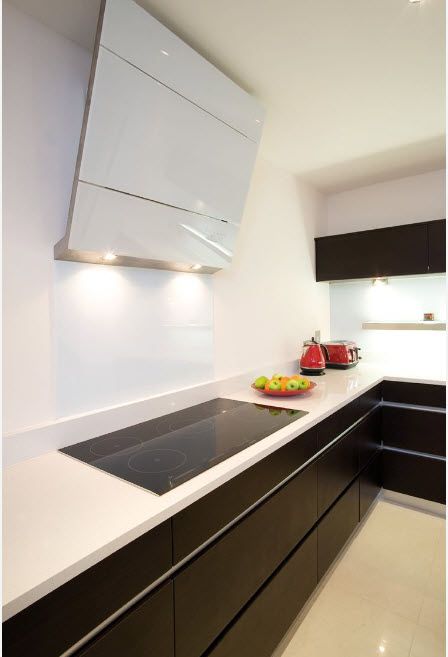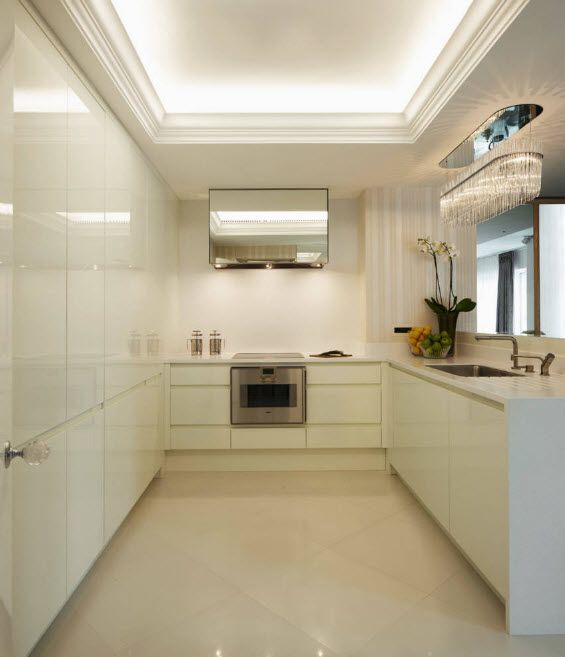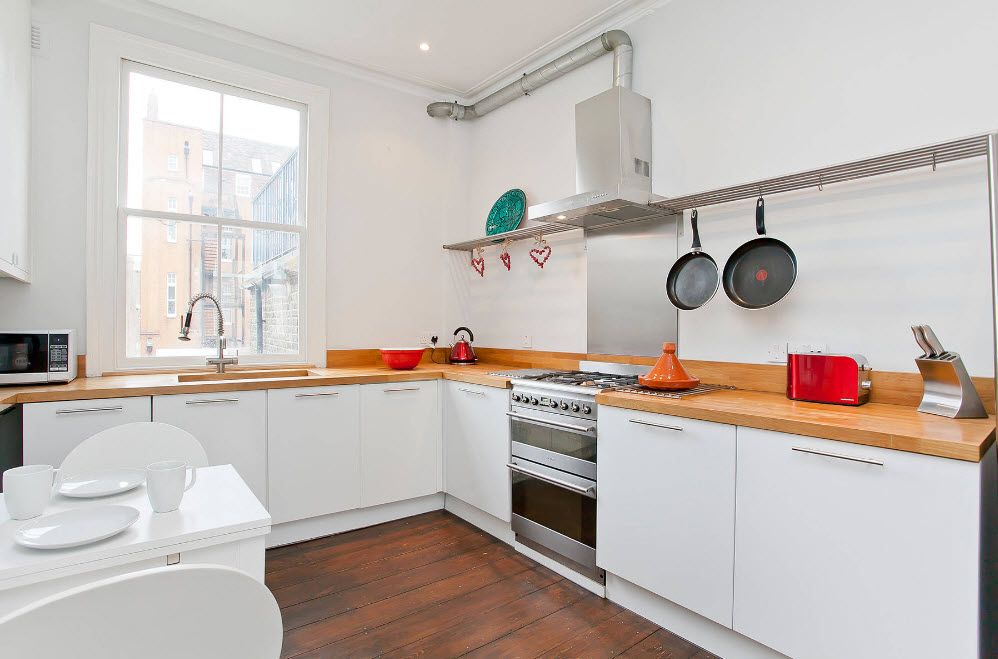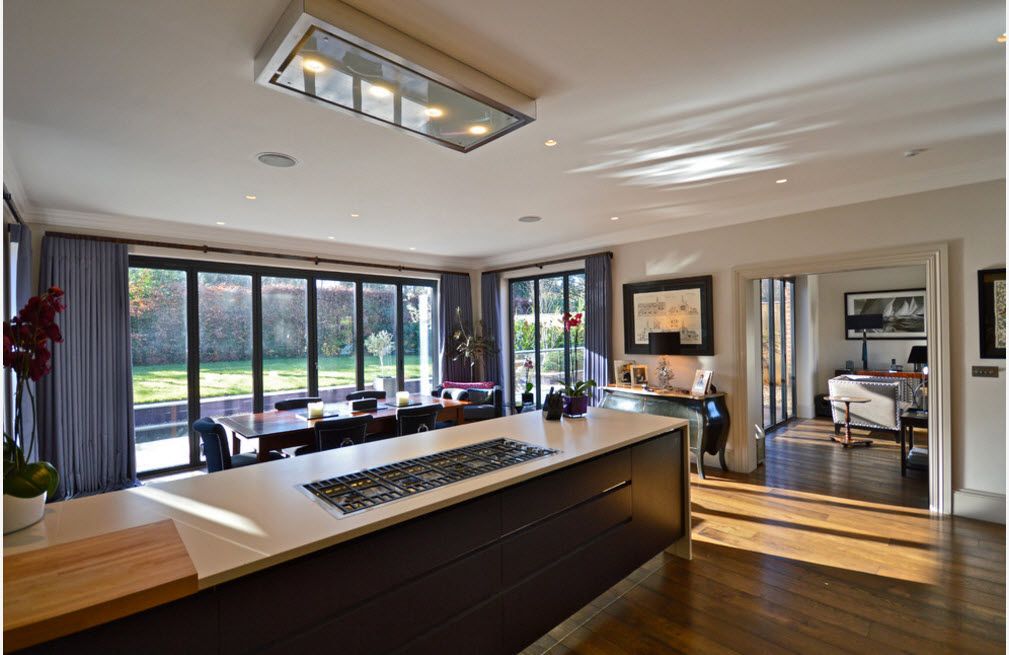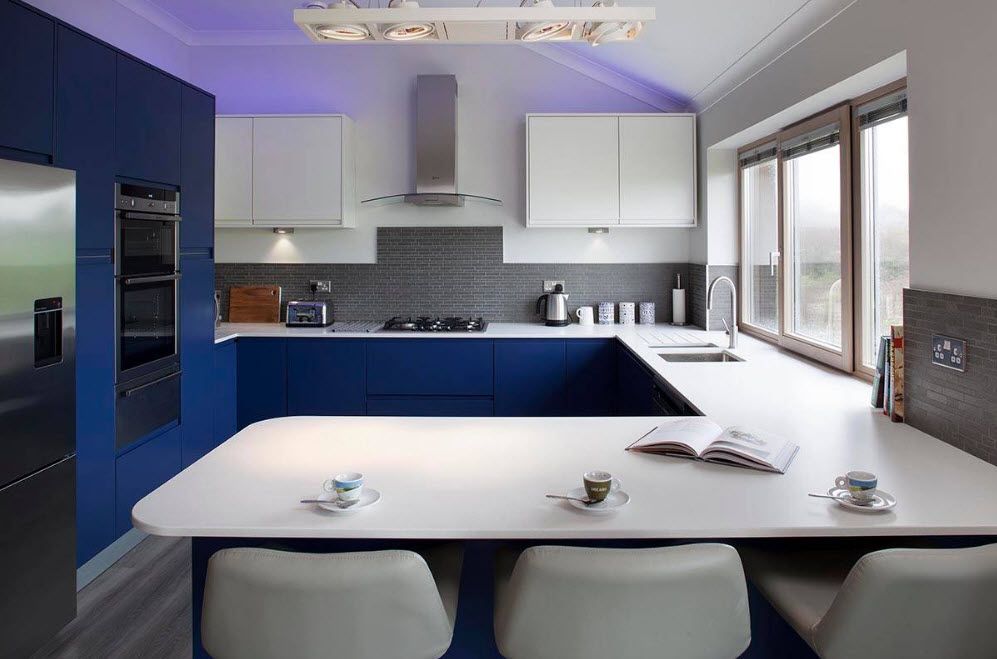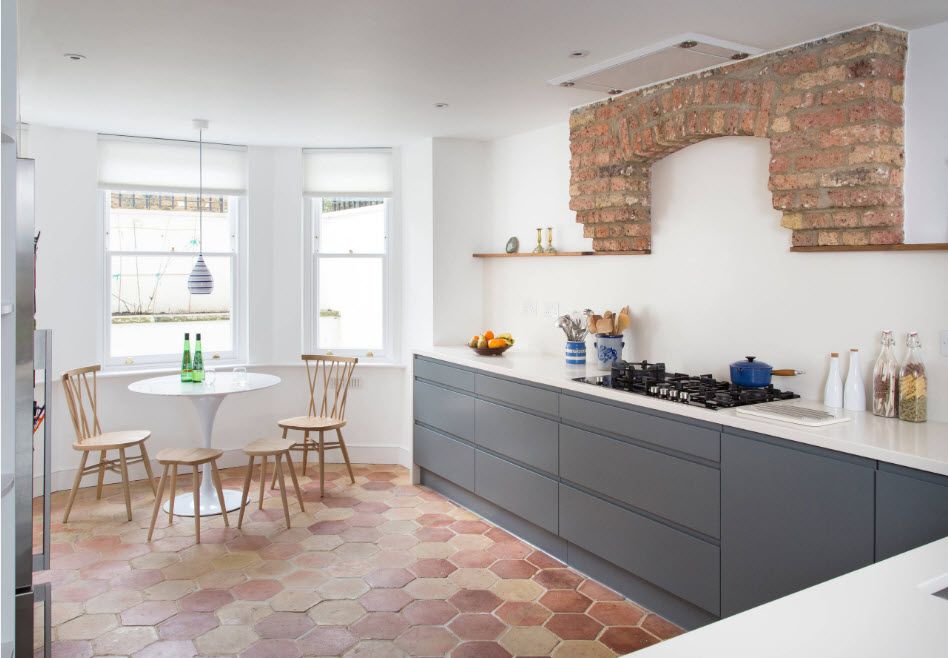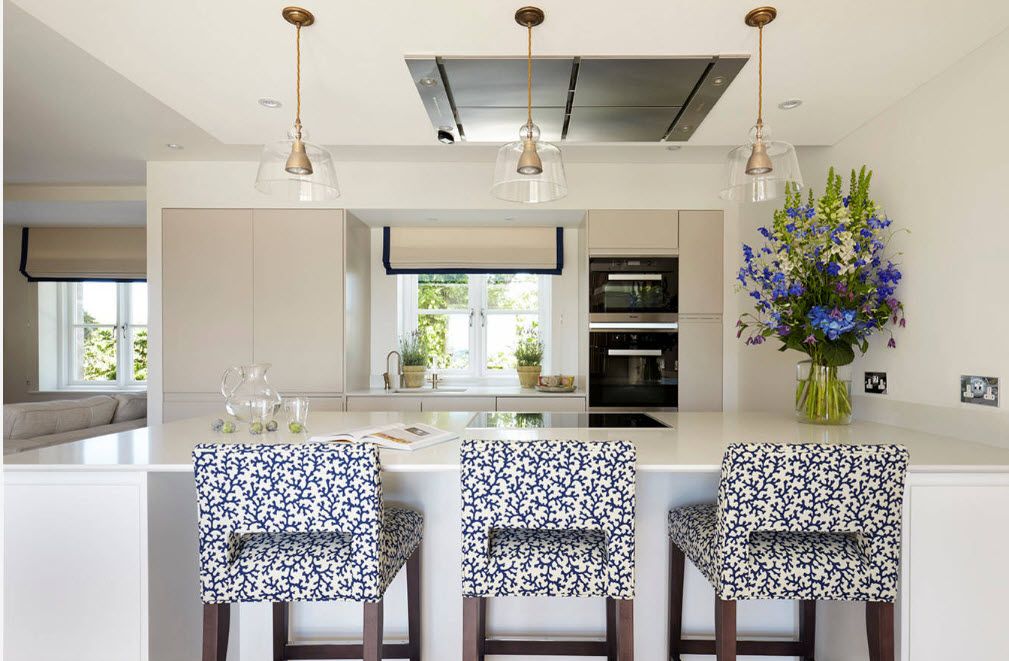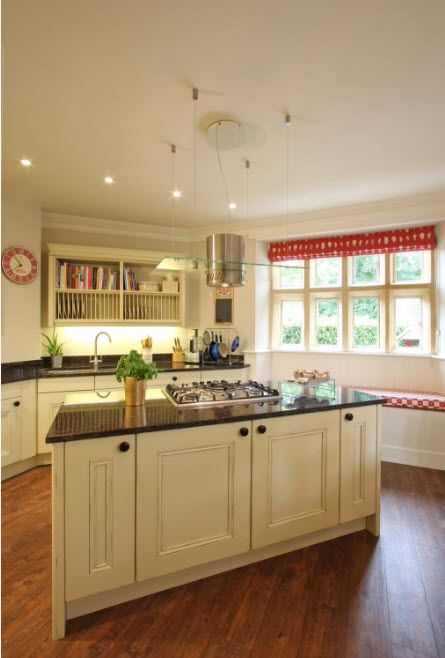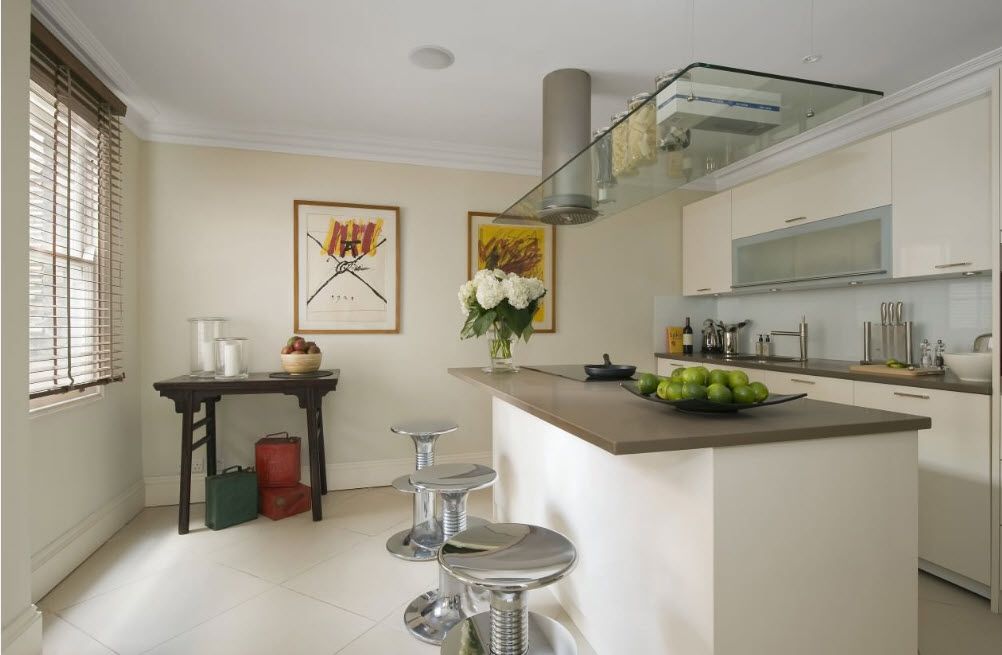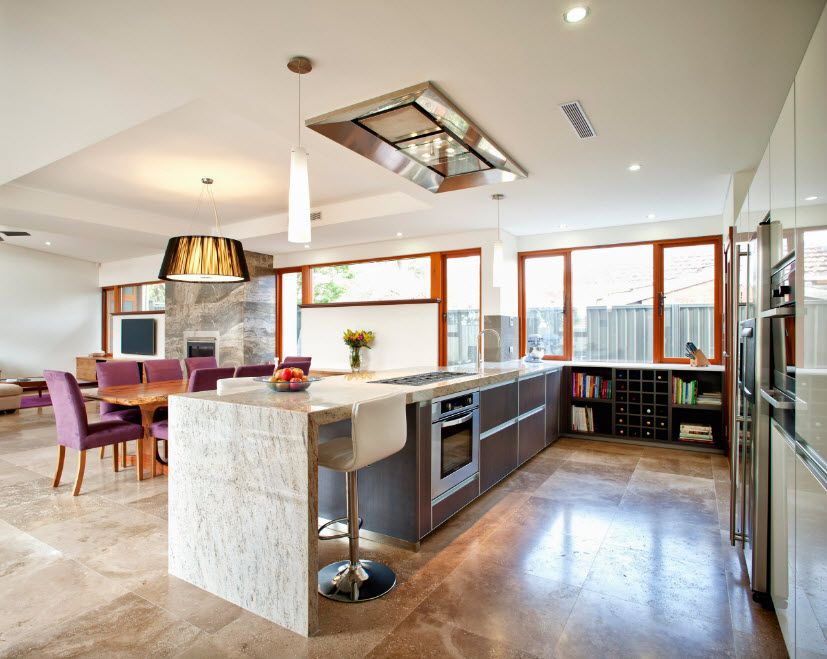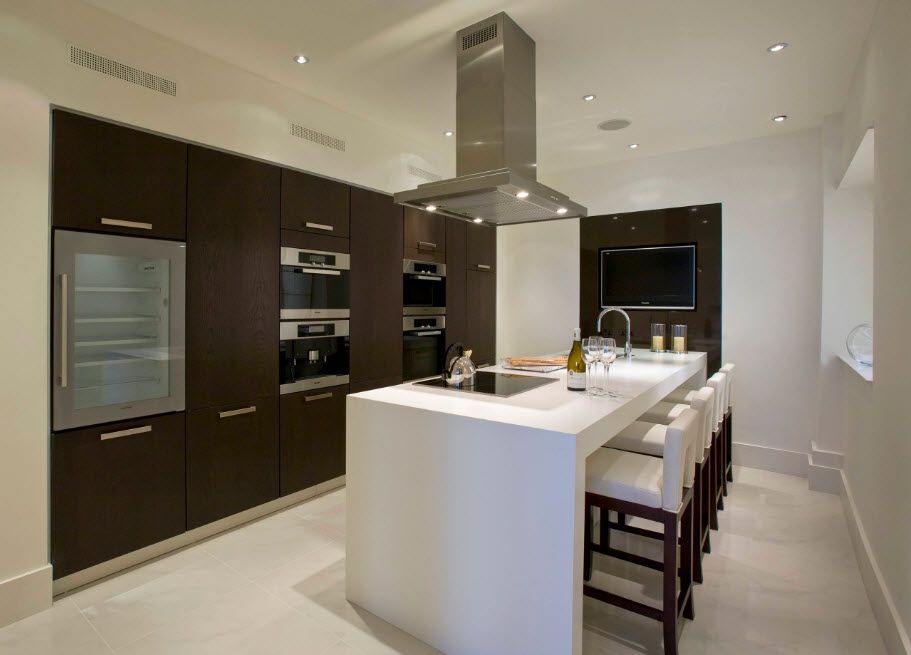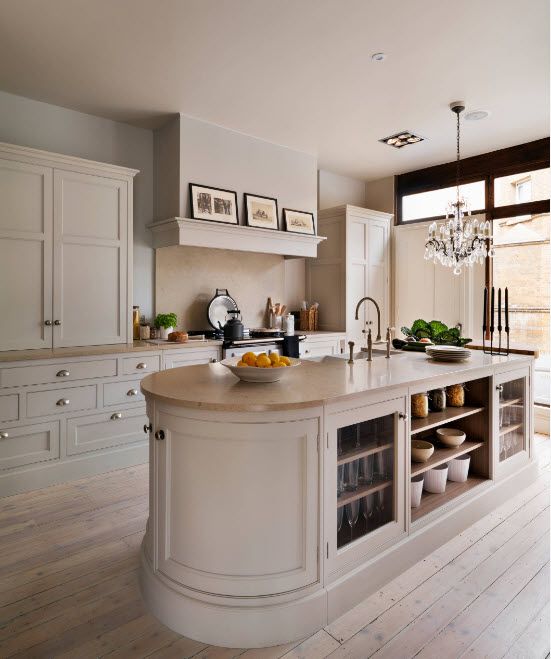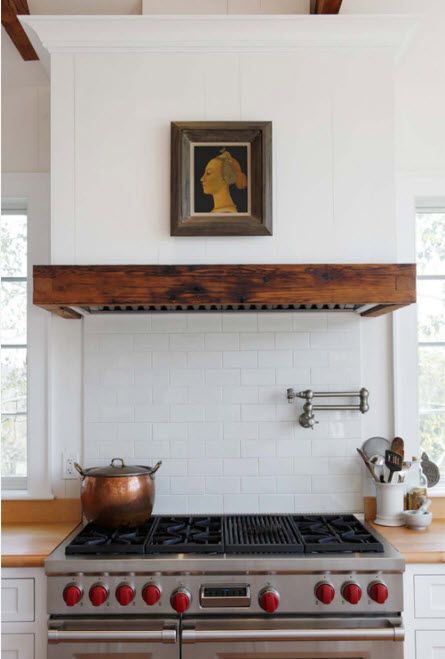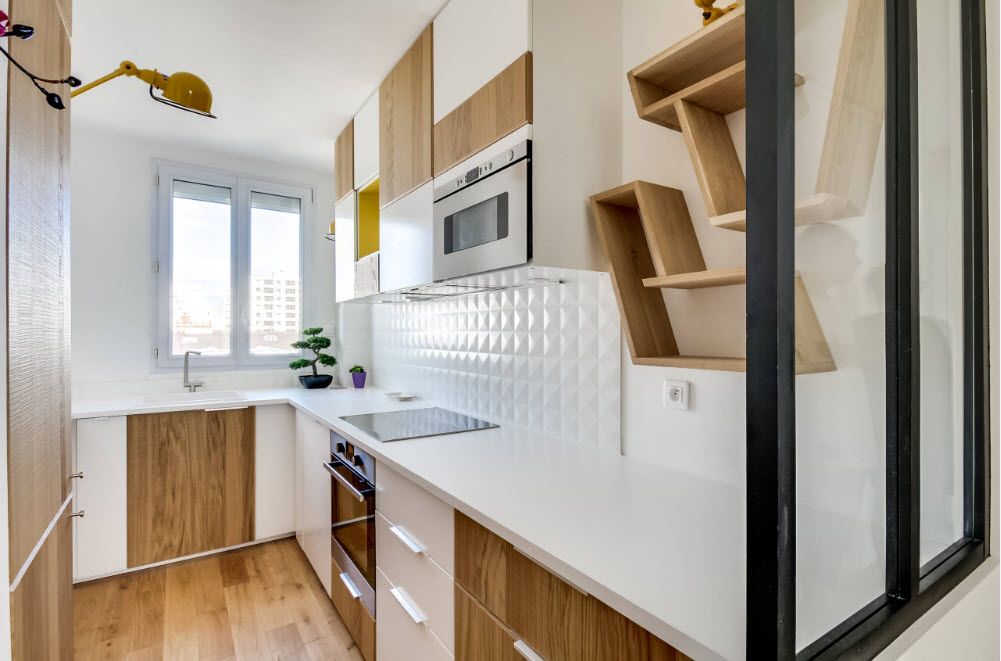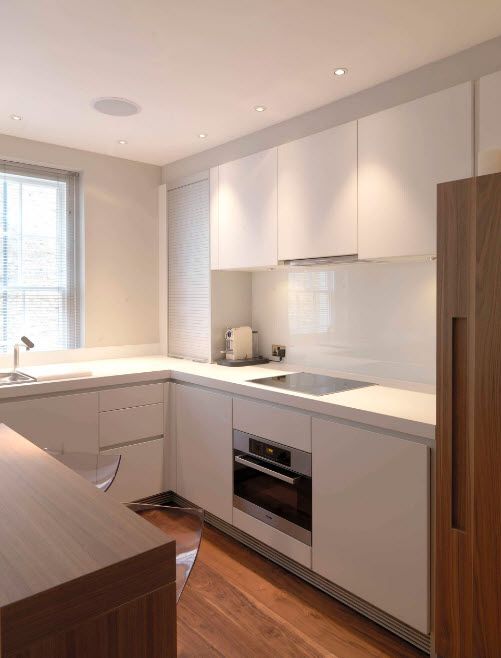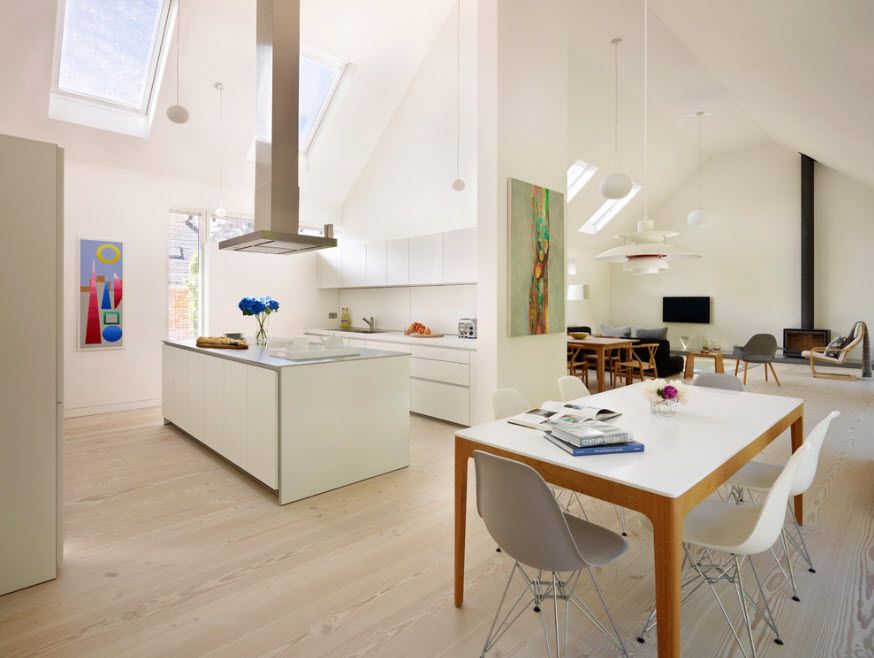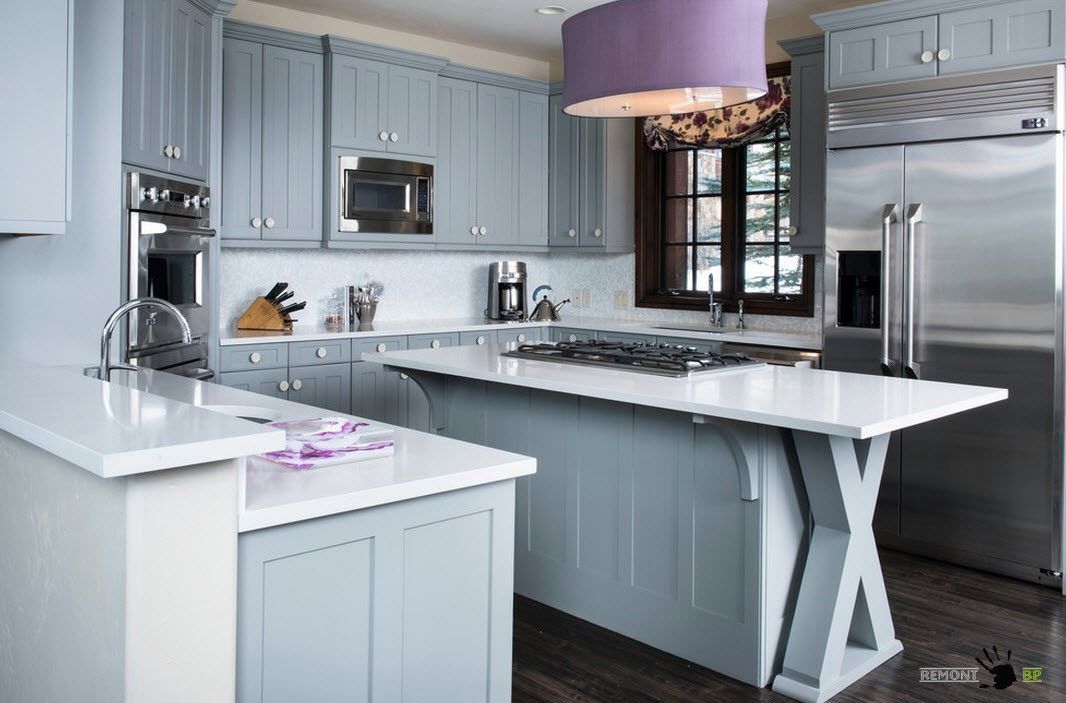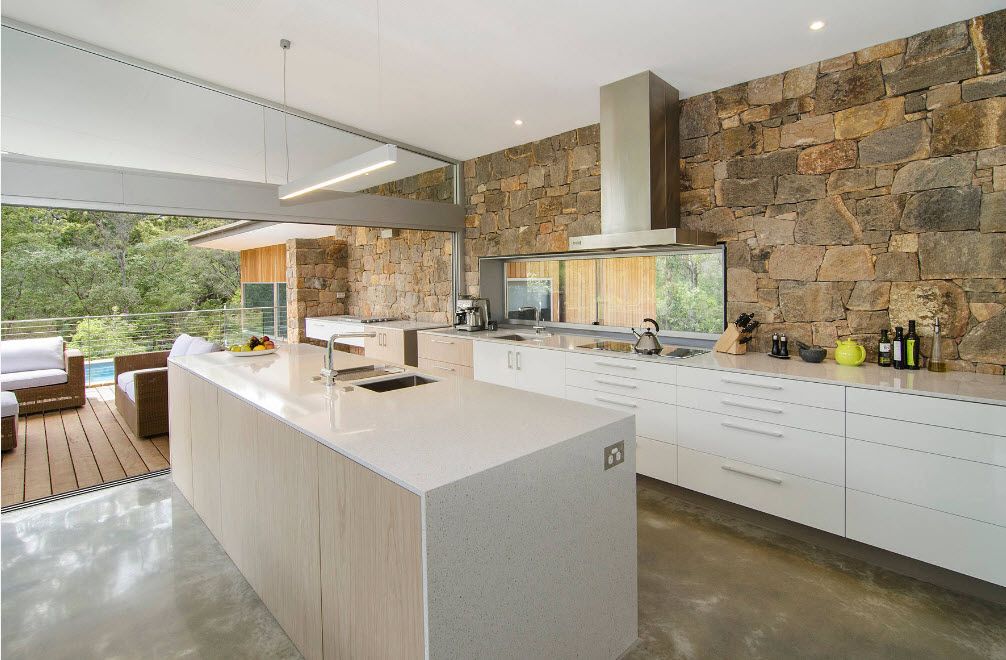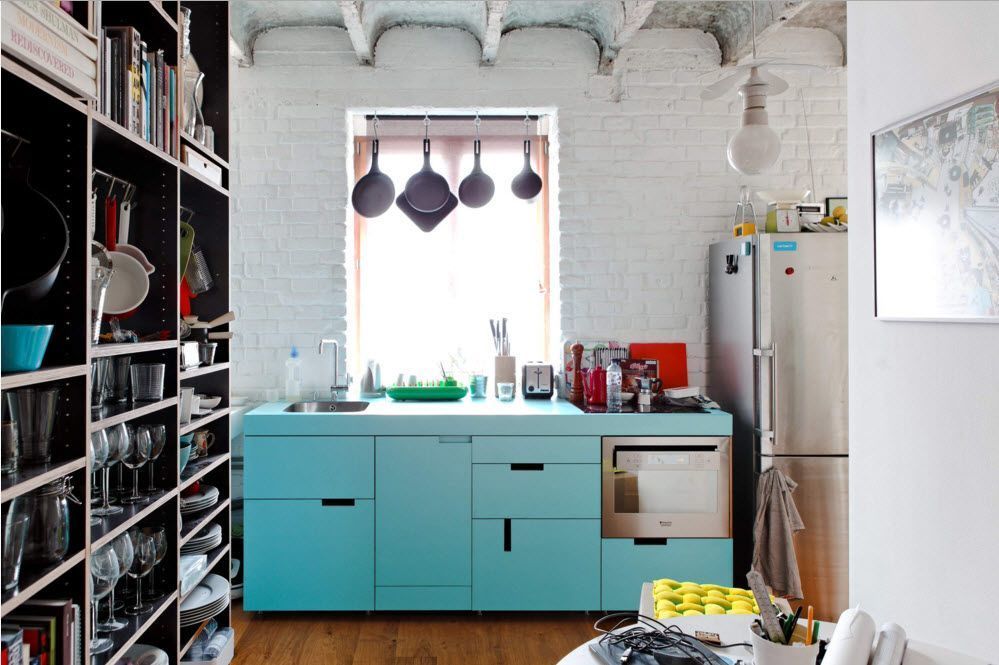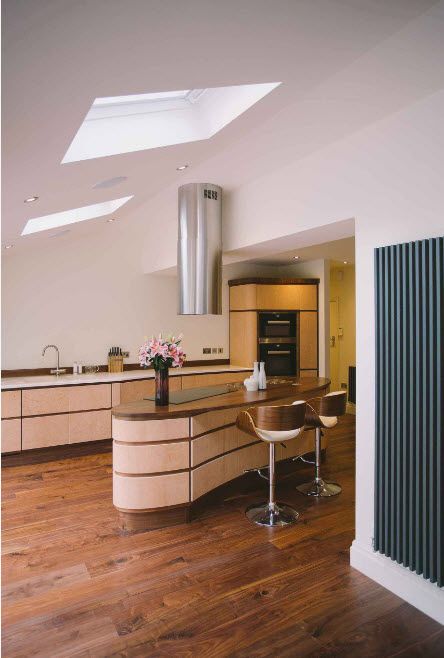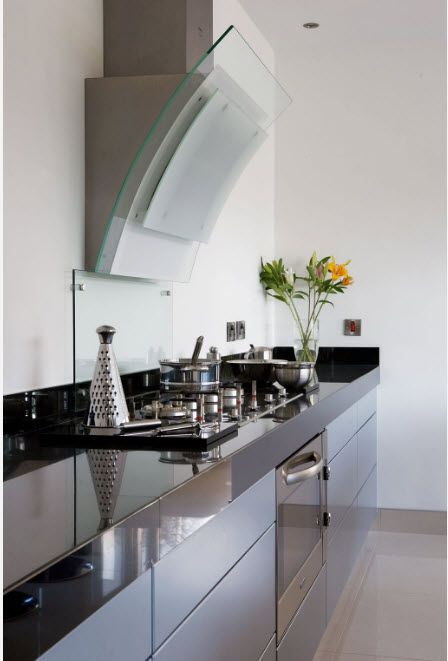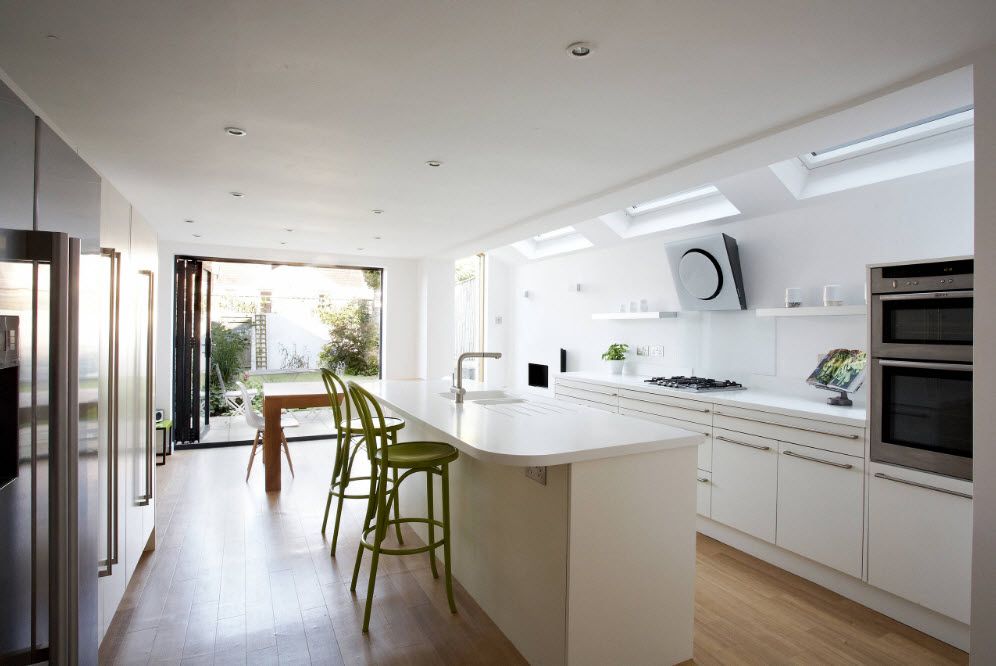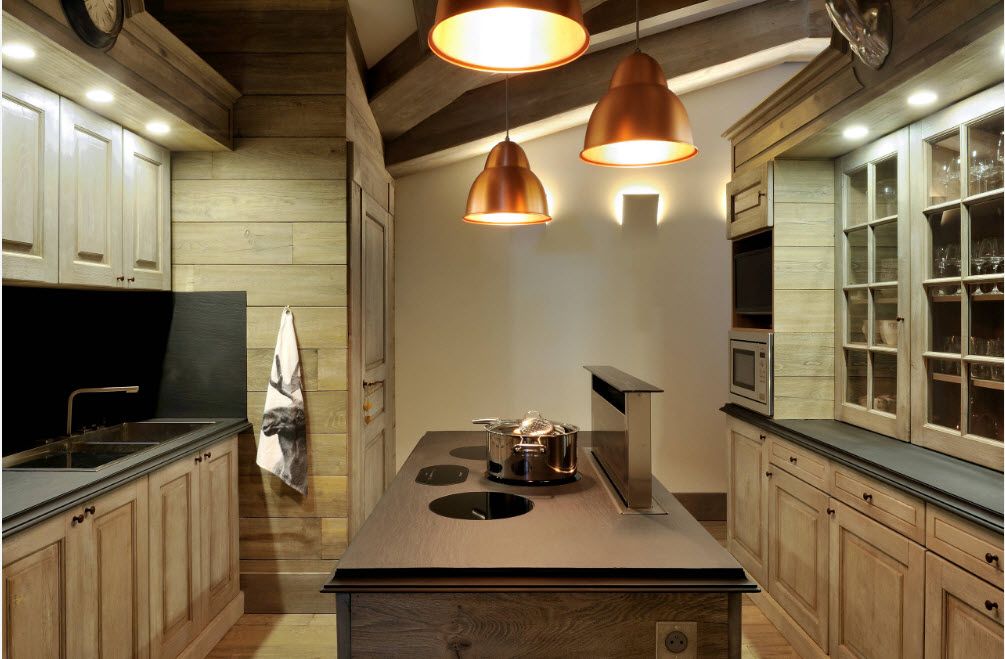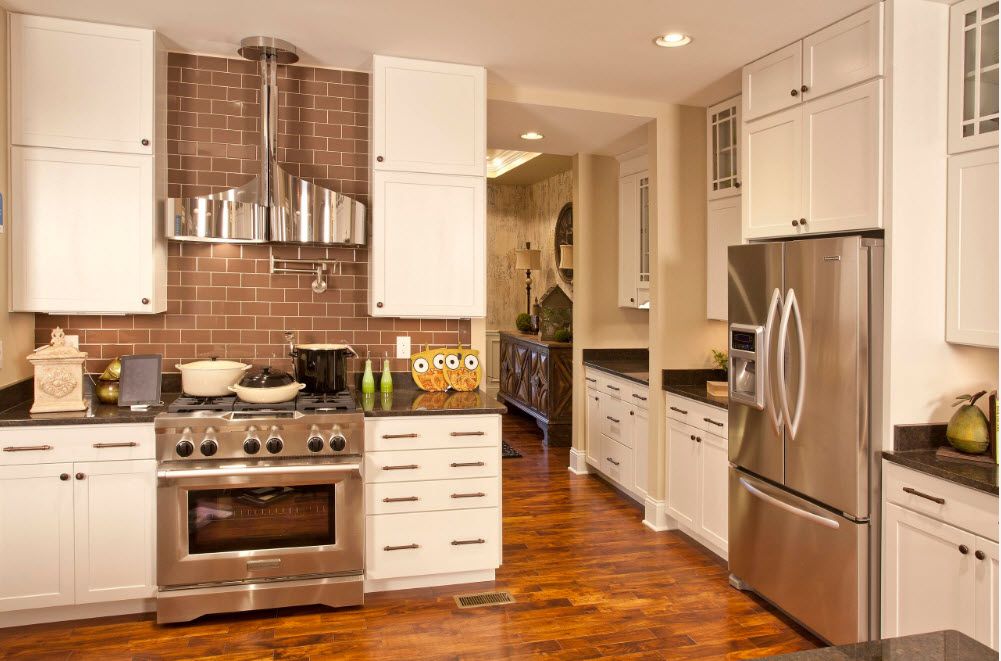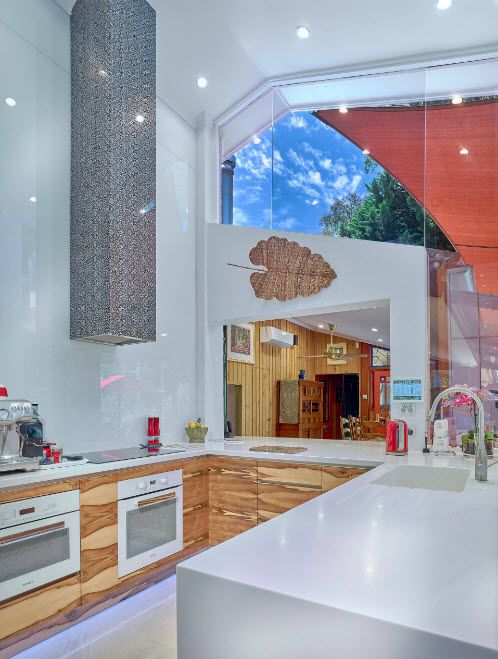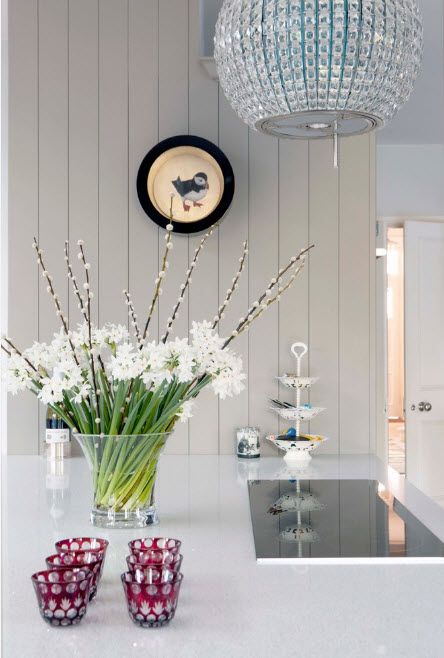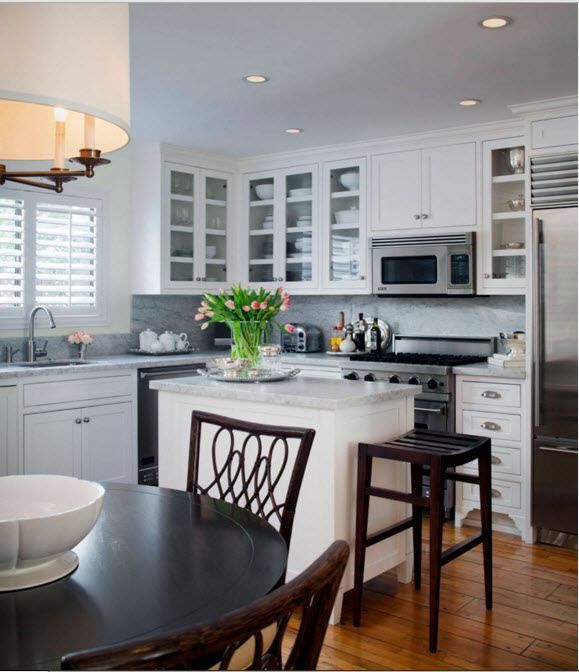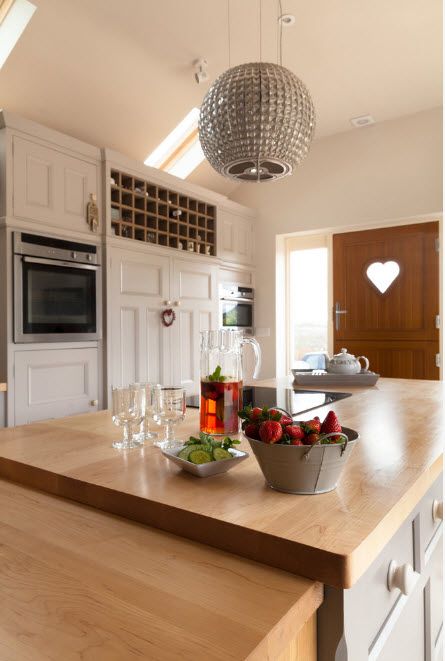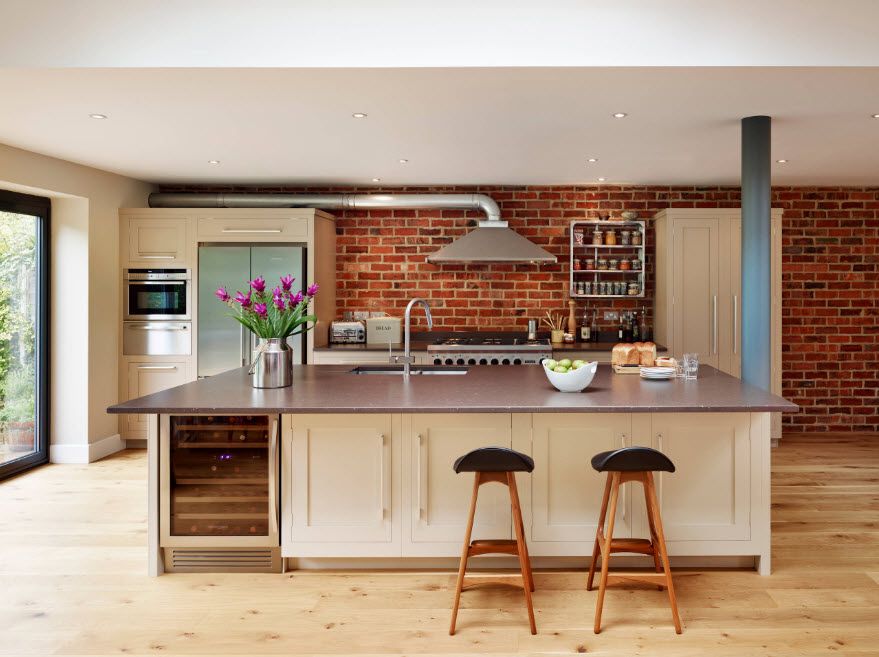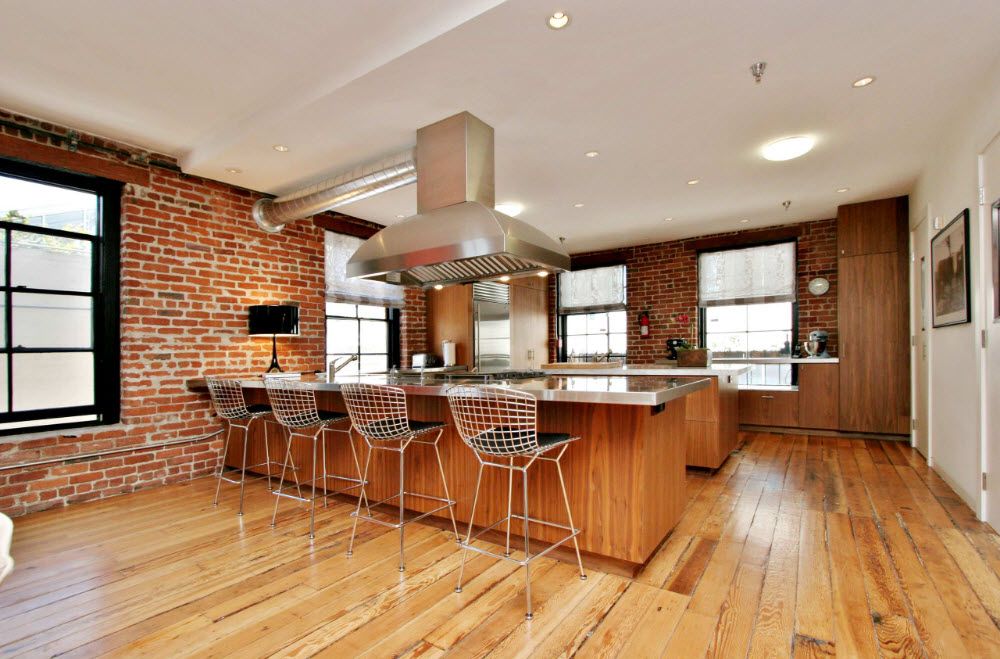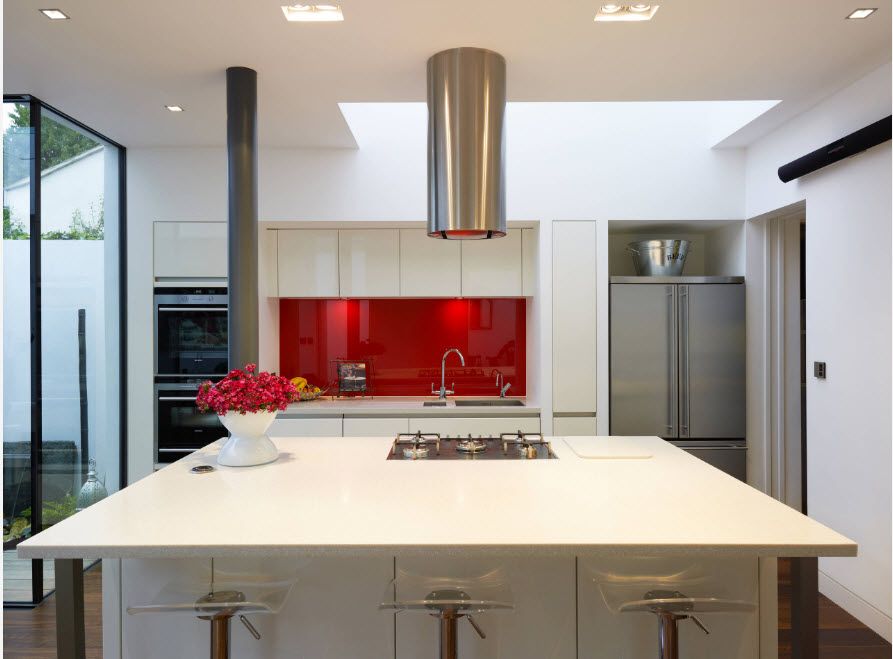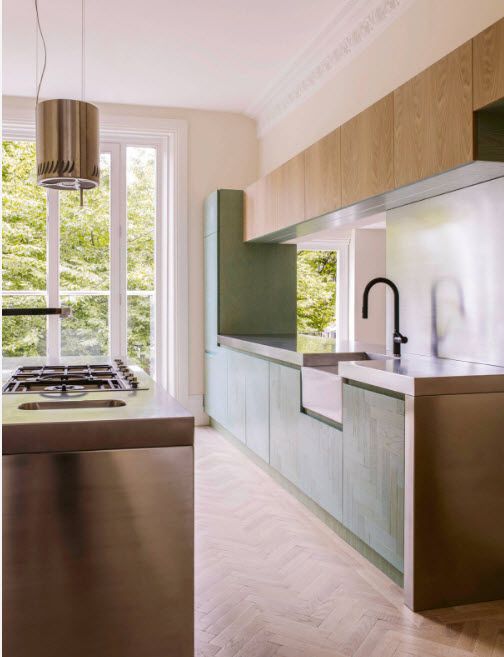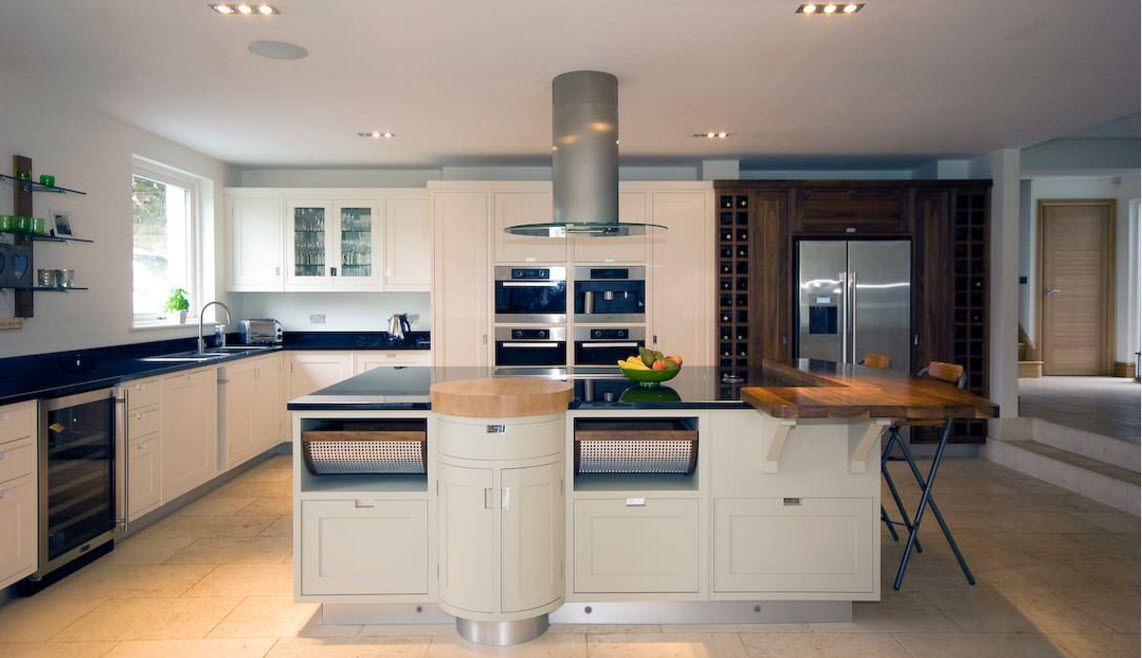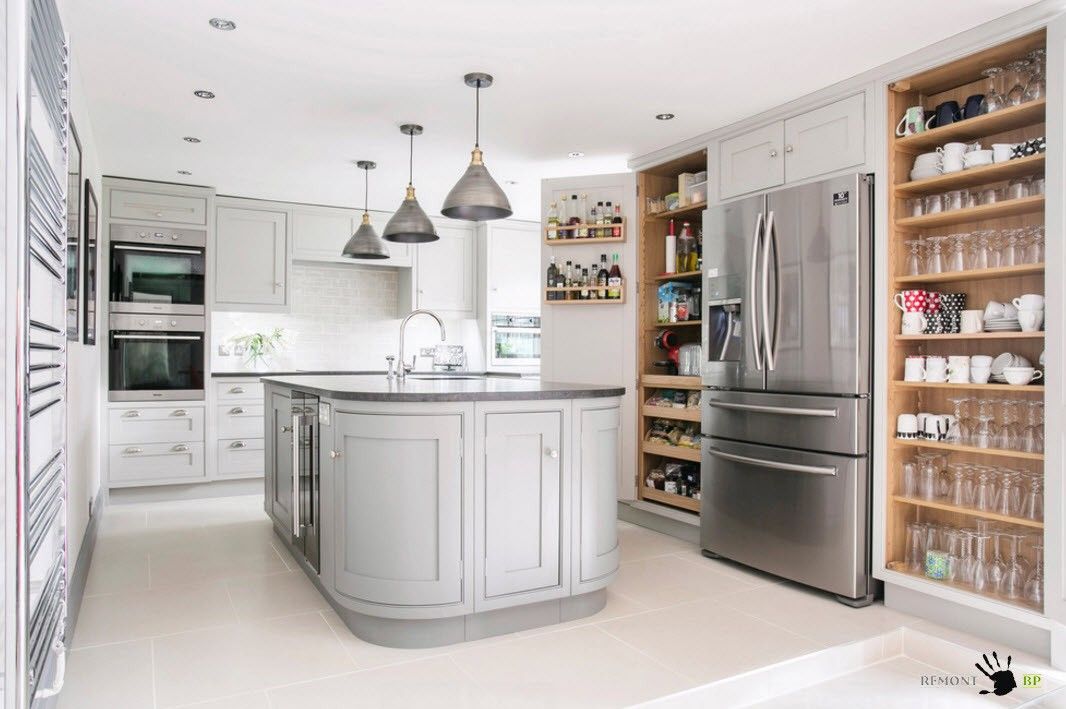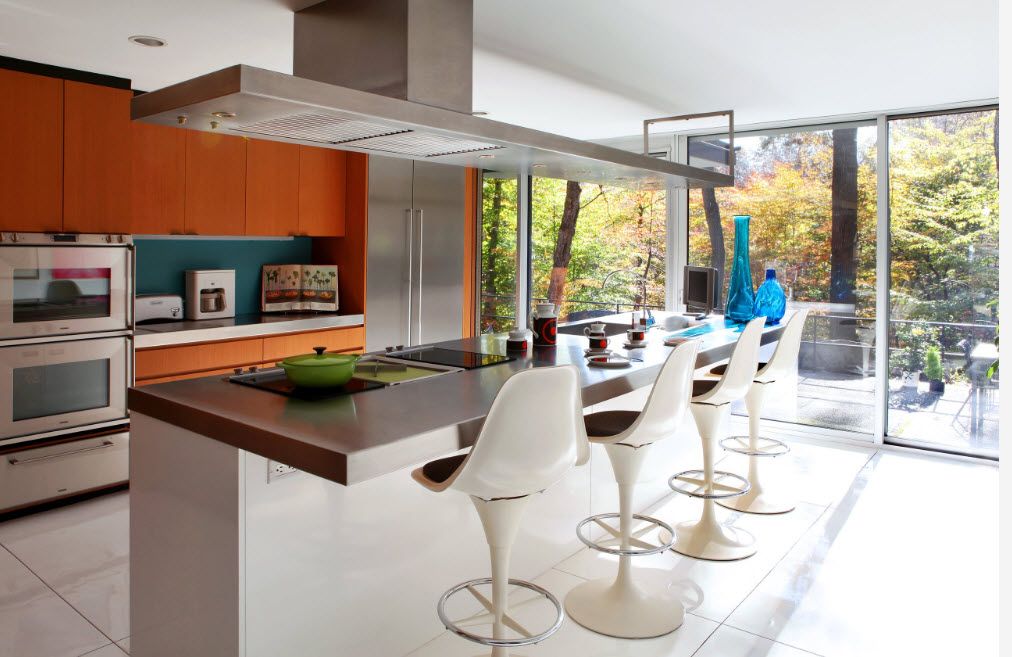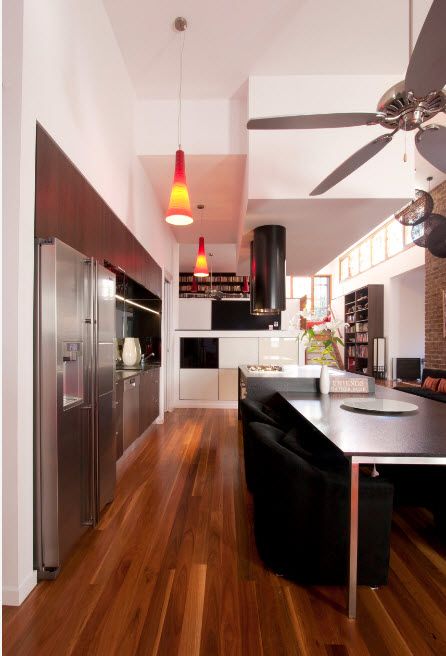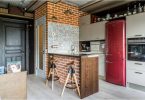No matter how the hood for the kitchen is called – an air cleaner or over-plate filter, and the question of choosing this important element of household kitchen appliances is quite acute. Some 15-20 years ago, many of our compatriots planning kitchen renovations would not even have thought about choosing a hood for a room with a high level of air pollution. Nowadays, it is difficult to imagine a kitchen space without this necessary device. The issue of choosing an air cleaner is especially acute for kitchens combined with a living room, dining room, and sometimes the entire living space of an apartment or private house. With the growing popularity of the use of open planning in the design of modern homes, the need to install a high-quality and powerful hood has increased significantly.
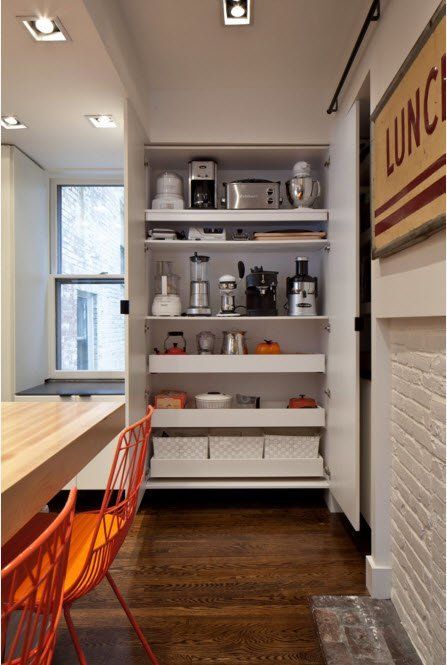
Modern housewives have already managed to make sure that a kitchen without a hood is an endless reason for cleaning. More recently, the snow-white ceiling above the stove has darkened, the walls and hanging cabinets have acquired an untidy look. And these are just the consequences that can be seen visually, there is no question of the smell of burning and the air polluted by the combustion products of various foods. To extend the original image of the kitchen, «as after renovation», save yourself and your household from unpleasant odors, catch the particles of fat floating in the air above the stove and significantly reduce the number of general cleaning of the kitchen space, you must choose the right hood.
Criteria for choosing a hood for the kitchen
Regardless of the model, all hoods are designed to purify the air in the kitchen space. This process is carried out in one of two ways:
- by filtering air in the room – air is passed through the built-in filters and the purified air is returned to the kitchen space;
- using exhaust ventilation – polluted air is removed outside the kitchen.
Modern models of kitchen hoods, most often, are equipped with a combined action system – they can perform both types of actions alternately.
Performance
One of the most important criteria for choosing a kitchen hood is its performance – the amount of air that the unit is able to pass through itself in units of time. Obviously, the efficiency of the household appliance directly depends on this indicator. If you believe the indicators of sanitary standards, then the entire air of the kitchen space should be replaced in 1 hour..
You can independently calculate the required hood performance for your kitchen. To do this, the area of the kitchen must be multiplied by the height of the ceiling, then multiplied by 12 (this is the air exchange rate determined by the SES) and the resulting number must be multiplied by the potential margin factor equal to 1.3. For example, for a kitchen with an area of 6 square meters and a ceiling height of 2.5 m, it is necessary to choose an air cleaner with a capacity of at least 234 cubic meters / h.
The size
According to experts, the width of the hood should not be less than the dimensions of the stove or hob. If the hood is significantly smaller, it will be worse to trap polluted air. If the width of your stove is 55-60 cm, then it is better to purchase a hood with a size of at least 80 cm.But not always the space above the hob and the design of the kitchen set allows you to follow this rule. And among the design models of hoods there are many original shapes with a small size, but high power..
Operating modes
As mentioned above, a kitchen air cleaner can operate in filtration mode, purifying the air passed through it, or it can act on the principle of forced ventilation. Many models are capable of working in combined mode. It is believed that only the exhaust mode can provide one hundred percent purification of the air in the room, but, as we understand, there is no air flow with this method of action. Having chosen the principle of ventilation, it will be necessary to immediately purchase replacement filters and carefully monitor the timely change of products.
Filter models
Almost all modern models of hoods are equipped with filter elements. As with water purification, air purification filters are divided into coarse and fine filters. Coarse filters retain only grease particles and are thin metal mesh. These filters are reusable and can be washed with special cleaning agents. Fine filters are usually carbon elements. They must be purchased separately, and the replacement period depends on the intensity of use of the ventilation mode on your hood.
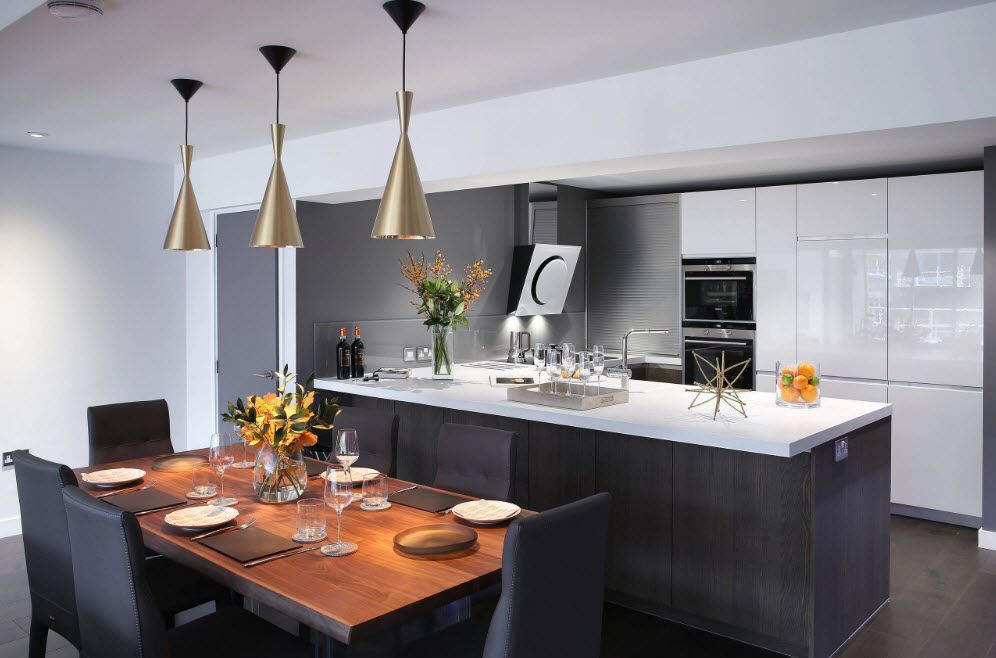
In modern models, in addition to coarse and fine filters, there are intermediate, additional filter elements. Most often they are a thin mesh of synthetic material. This grid is disposable, you need to change it as needed. Do not forget to check the level of dirt – an exhausted synthetic mesh can harm the operation of the entire device.
How to work
The choice of how to control the hood depends solely on your preferences. Modern air cleaners can be equipped with a touch control panel – pressing non-convex buttons. Many homeowners love the familiar way of using a push-button system. Many modern models of hoods are equipped with control panels with the simplest task panels.
Additional options
When choosing a hood for the kitchen, you should pay attention to additional criteria, including, for example, the residual fan stroke. This function ensures that the cooker hood operates after switching off (usually 5 to 15 minutes). This «bonus» allows you to completely purify the air after cooking. Additional options include interval switching on of the device. For example, the hood is switched on for a short time (5-10 min) 1-2 times per hour to ensure continuous air renewal in the room. Even a room where food is not being prepared at the moment needs timely ventilation..

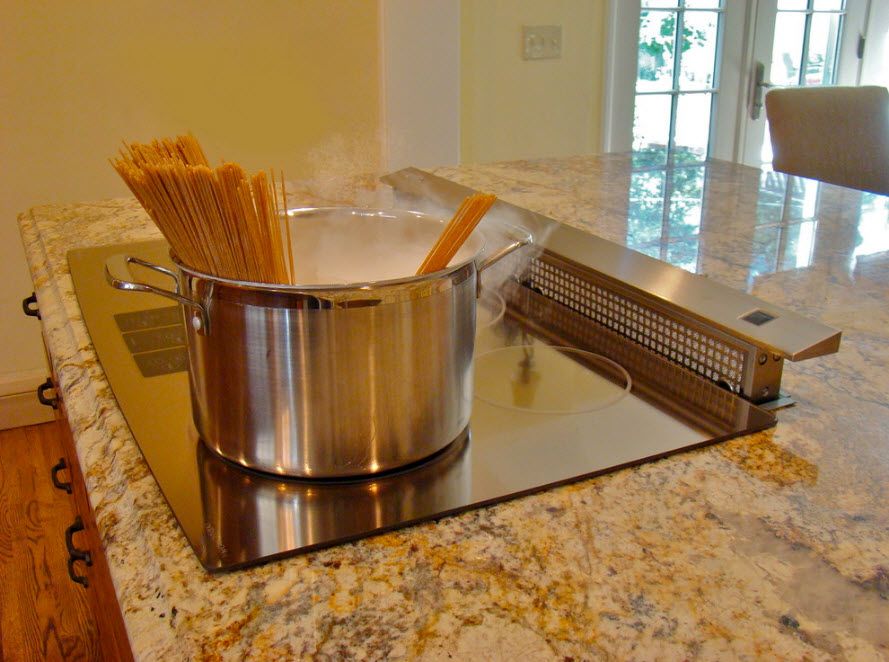
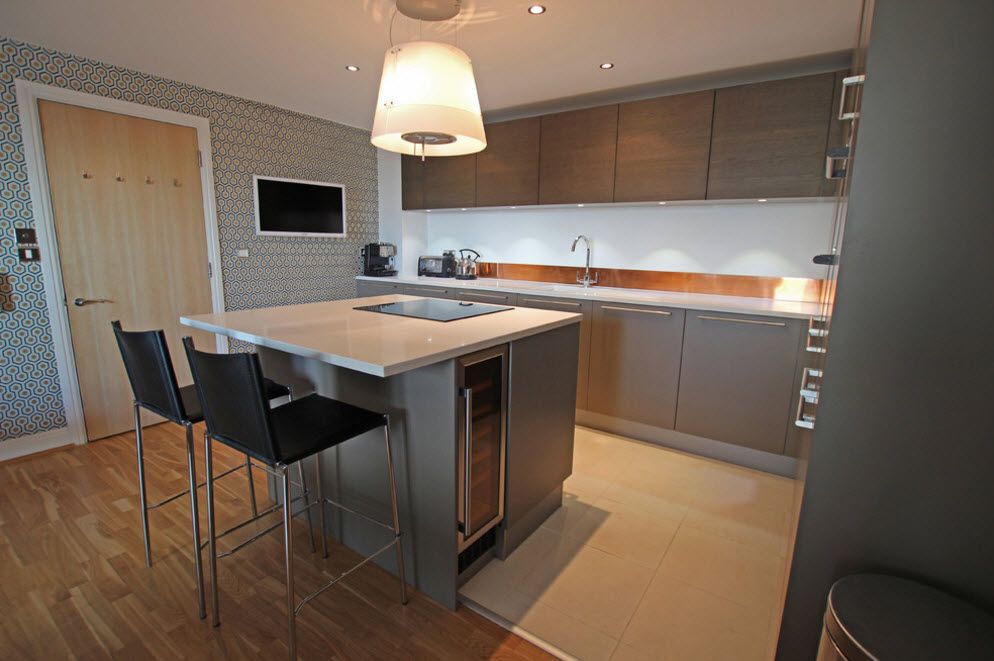
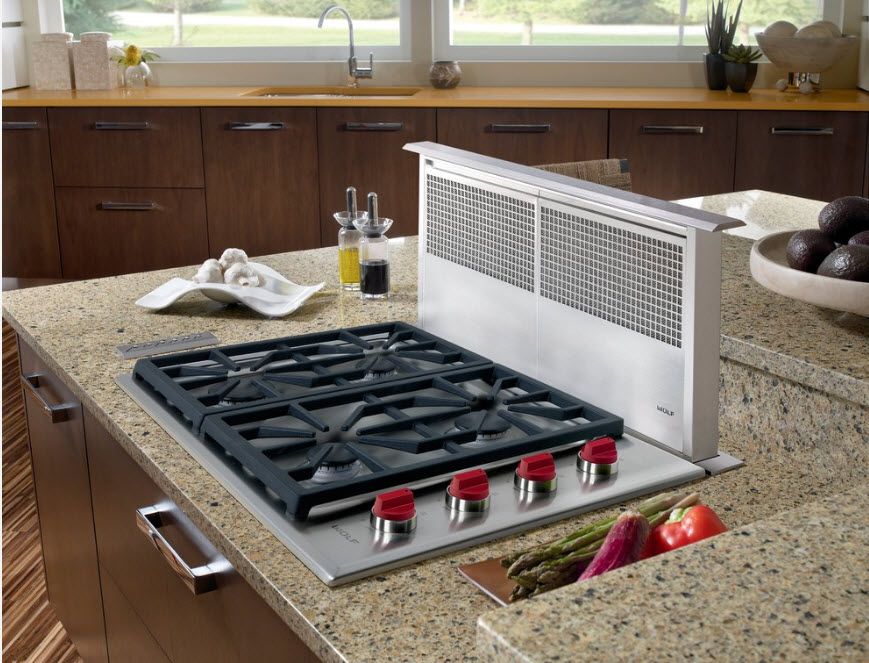
Body material
When choosing a hood, do not dwell only on technical characteristics, also evaluate the material from which the device case is made. This could be:
- plastic;
- enameled steel;
- stainless steel;
- aluminum;
- strained glass.

The stainless steel body of the device in combination with tempered glass looks very stylish and modern. Such a device will be organically integrated into the kitchen, decorated in a modern interior style. It is possible to order an individual production of the device with the set of functions you need, the choice of body material and original design.
Factors on which the efficiency of the kitchen air cleaner depends:
- air pressure generated by the motor. It is obvious that high air pressure readings will be accompanied by a good performance of the device;
- operating mode of the mechanism. The hood brought into the ventilation shaft works more efficiently than the device in the ventilation mode;
- the cross-section of the grease filters and the density of the carbon filter elements (if any in the design of the device). The denser the filter, the higher the air purification performance. But it is important to understand that no filter element will provide 100% air purification;
- performance margin. The most effective mode is the mode that allows you to quickly clean the air in extreme conditions – when food is burning. When choosing a hood, it makes sense to pay attention to this parameter;
- device dimensions. The larger the hood dimensions, the more polluted air is captured from the larger area. This means that less air turbulence will be generated near kitchen furniture. After all, it is known that the surface of a kitchen set near a stove or hob is subject to drying out over time due to constant exposure to hot air..
Types of kitchen hoods
Traditional (classical)
This is a pendant model that is mounted to the wall above the stove or hob. Sometimes such a hood is located under the top tier kitchen cabinet. This is one of the cheapest options for a kitchen air purifier. Manufacturers offer devices with disposable acrylic grease filters. Recirculated air operation requires the installation of charcoal filters that can neutralize fine particles. The smell of such devices is only partially removed..
Embedded
The name speaks for itself – the model is built into the upper cabinet of the kitchen set, located above the stove or hob. As a rule, such hoods are equipped with a pull-out panel that increases the area of the intake of air, which must be cleaned. This option greatly facilitates the management of equipment and increases its productivity. As a rule, such models are equipped with two motors and multi-layer filters that trap grease particles. Built-in appliances do not differ much in price from traditional ones. If you choose between these two options, then it is better to purchase a device that you can build into a hanging cabinet.
Fireplace (dome)
Such models are mounted to the ceiling or wall above the stove or hob. The hood got its name for its resemblance to a chimney (chimney). Such air cleaners come in different variations – all-metal, metal with glass, classic (wood-like). The design of fireplace hoods can be the most creative and suitable for kitchen spaces decorated in various interior styles – from traditional to high-tech..
Island models can also be referred to dome hoods. They are most often located directly above the hob and are attached exclusively to the ceiling. Such models are especially effective when using the layout of a kitchen space with an island in which a stove or hob is integrated. The design of island models can be very diverse – from a simple rectangular box to a device comparable to space equipment.
Vertical (oblique)
The difference between such hoods is in the position of the gripper panel in relation to the plate. The hood is positioned vertically or at a slight angle to the cooking surface. Such models help to save useful kitchen space, while not inferior in performance to traditional appliances..
Several creative solutions for different styles of interior decoration
A cooker hood with an original design can become a key element of the kitchen interior. Modern design models are capable of overshadowing both the bright facades of the kitchen set and the unusual finish of the apron. The hood looks especially impressive, in harmony with the rest of the household appliances in the kitchen.
About many modern models of air purifiers, it is not immediately clear that you have household appliances in front of you. Some range hoods look like pendant lights with many decorative elements. By the way, such devices also carry out illumination functions.
A loft-style kitchen is open communications against the background of brick or concrete walls. Hiding the hood from the eyes is not exactly unnecessary, flaunting this household appliance is part of the design concept. These designs typically use massive domed air cleaners with shiny or brushed metal surfaces..
In a kitchen decorated in a modern or high-tech style, original island models with shiny (often chrome) surfaces look harmonious. Round and oval, diamond-shaped and asymmetrical – there is no limit to the variety of options.
The hood looks original, which is part of the ventilation pipe. This design allows you to save free space above the working area of the kitchen, although it reduces the performance of the device itself..
The hood panel, which serves for air intake, is often extended to one side of the hob. It turns out a kind of shelf on which you can store the necessary kitchen accessories. As a rule, such a surface is equipped with lamps. As a result, you get a light source not only above the hob, but also a sink or chopping area (depending on the arrangement of the kitchen island).
For some designers and homeowners, it is considered the norm to place a pair of identical hoods at once above the stove or hob. As a result, the design of the room only benefits from the originality of the approach, but the productivity of the air recirculation doubles.

